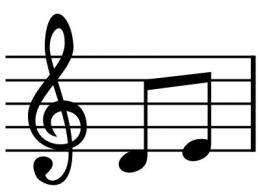February 21, 2012 report
Researchers find classical musical compositions adhere to power law

(PhysOrg.com) -- A team of researchers, led by Daniel Levitin of McGill University, has found after analyzing over two thousand pieces of classical music that span four hundred years of history, that virtually all of them follow a one-over-f (1/f) power distribution equation. He and his team have published the results of their work in the Proceedings of the National Academy of Sciences.
One-over-f equations describe the relative frequency of things that happen over time and can be used to describe such naturally occurring events as annual river flooding or the beating of a human heart. They have been used to describe the way pitch is used in music as well, but until now, no one has thought to test the idea that they could be used to describe the rhythm of the music too.
To find out if this is the case, Levitin and his team analyzed (by measuring note length line by line) close to 2000 pieces of classical music from a wide group of noted composers. In so doing, they found that virtually every piece studied conformed to the power law. They also found that by adding another variable to the equation, called a beta, which was used to describe just how predictable a given piece was compared to other pieces, they could solve for beta and find a unique number of for each composer.
After looking at the results as a whole, they found that works written by some classical composers were far more predictable than others, and that certain genres in general were more predictable than others too. Beethoven was the most predictable of the group studied, while Mozart was the least of the bunch. And symphonies are generally far more predictable than Ragtimes with other types falling somewhere in-between. In solving for beta, the team discovered that they had inadvertently developed a means for calculating a composer’s unique individual rhythm signature. In speaking with the university news group at McGill, Levitin said, “this was one of the most unanticipated and exciting findings of our research.”
Another interesting aspect of the research is that because the patterns are based on the power law, the music the team studied shares the same sorts of patterns as fractals, i.e. elements in the rhythm that occur the second most often happen only half as often, the third, just a third as often and so forth. Thus, it’s not difficult to imagine music in a fractal patterns that are unique to individual composers.
More information: Musical rhythm spectra from Bach to Joplin obey a 1/f power law, by Daniel Levitin, Parag Chordia, and Vinod Menon, PNAS, 2012.
Journal information: Proceedings of the National Academy of Sciences
© 2011 PhysOrg.com

















